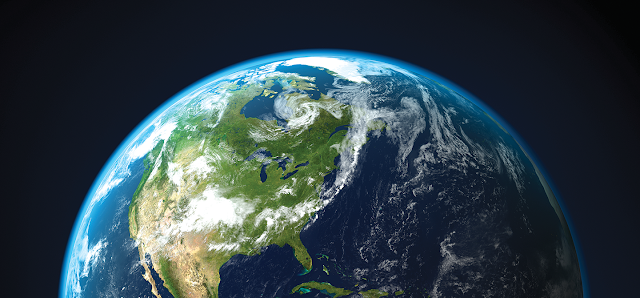Scientists have previously thought that sunlight is the primary source of formation of hydroxyl molecules (OH) in the atmosphere, but new research has found that it can form automatically and naturally from the strong electric field on the surface of airborne water droplets.
The results of the study funded by the European Research Council were published in the journal "Proceedings of the National Academy of Sciences" on April 3, in which researchers from several countries participated.
New hydroxide production mechanism
Hydroxide molecule is necessary to oxidize hydrocarbons and remove toxic chemicals from the air. Previously, researchers hypothesized that sunlight and mineral stimuli were necessary to generate hydroxide, but this study found that this ingredient can automatically form in water droplets in the air due to electrical forces on the surface.
The study, attended by Sergei Nizkorodov, Professor of Chemistry and Atmospheric Scientist at the University of California, suggests that a unique set of weather conditions can generate hydroxide molecules that facilitate atmospheric self-purification by neutralizing pollutants, even in the absence of sunlight.
Researchers used a high-altitude research aircraft to measure reactive oxygen compounds directly at different points in the atmosphere. This allowed them to identify chemical mechanisms at work.
The process included reactive oxygen compounds, in particular ozone roots and hydroxide, which operated as atmospheric cleaners, chemically dismantling pollutants and recycling nitrogen compounds.
The study found that a strong electrical field on the surface of airborne water droplets and ambient air could create hydroxide particles by a previously unknown mechanism. Scientists have made a new discovery on how hydroxide molecules are formed, which naturally help to clear the atmosphere of pollutants and greenhouse gases emitted from human activities.
The researchers found that hydroxide molecules form at similar or higher rates in the dark, indicating that this surface mechanism can compete with or exceed photochemistry as a source of hydroxide without sunlight.
Discovery challenges current assumptions
In a UCLA press release, Nizkorodov said "we need hydroxide to oxidize hydrocarbons, otherwise they will accumulate in the atmosphere indefinitely."
For his part, Christian George, atmospheric chemist at the University of Lyon in France (Université Claude Bernard Lyon) and lead author of the study, explained that "hydroxide is a key player in the story of atmospheric chemistry, it triggers reactions that cause the degradation of airborne pollutants and help to remove harmful chemicals and toxic gases, such as sulfur dioxide and nitric oxide from the atmosphere."
Nezkorodov noted that the current study challenges the assumption that hydroxide is generated by photochemistry or oxidation chemistry, which requires sunlight or mineral catalysts to function, and says that in pure water hydroxide can be formed automatically through special conditions on the surface of droplets.
Nezkorodov stated that the results change the understanding of hydroxide sources, which will change how other scientists build computer models that try to predict how air pollution occurs, and said, "It can significantly change air pollution models. Hydroxide is an important oxidizing agent within water droplets and the main assumption in the models is that hydroxide comes from the air, and is not produced directly in the drop. "
This new discovery provides a new mechanism for producing hydroxide that can work day or night, challenges current assumptions in air pollution and chemistry models around hydroxide sources and composition, and suggests that hydroxide may form at faster rates and in more ways than previously realized.



Comments
Post a Comment